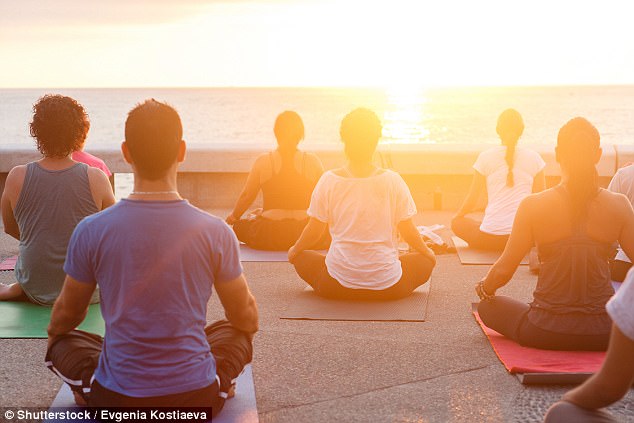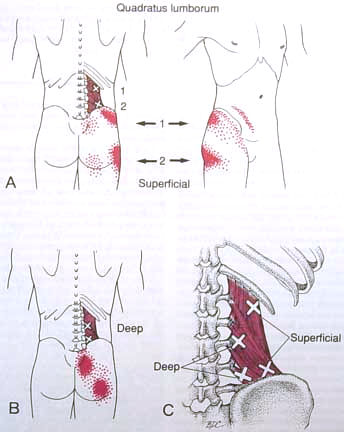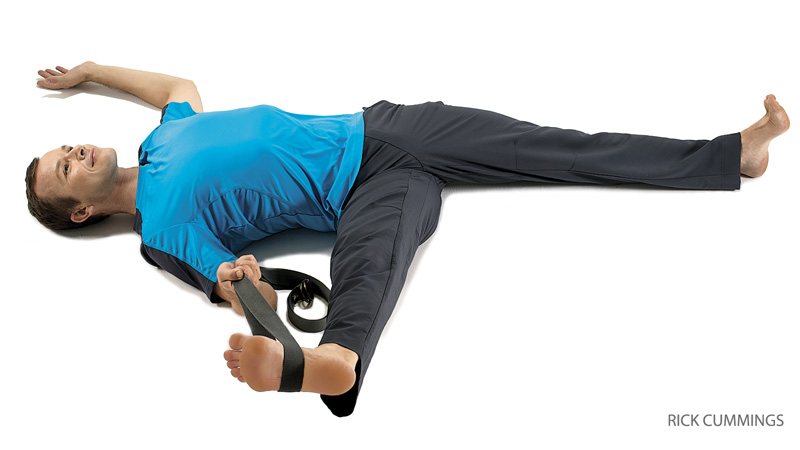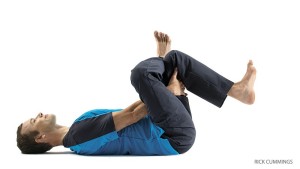
Yoga is becoming more popular nowadays as a tool that helps people stay limber, and for some types, food for the mind. There are many styles of yoga. If you participate in the right yoga class or sequence in the right yoga exercises, you can unlock crazy amount of true raw strength that is within your body. Many people do not know that yoga has been shown to be an effective back pain solution. Go check out the recent Consumer Report issue in regards to Back Pain. (click on the picture of CR magazine to read their article)
ReVITALize Rehab Club understands that in order be life resilient, you would need to master the four categories of flexibility, strength, coordination and endurance. If you get the proper mixture of yoga moves, sequencing and prolong holds of certain moves, you are addressing these four categories in a short time span.
If you follow our club, you understand that we promote and address internal wellness like our digestive organs, and believe this will enhance our muscles and joints systems to work smarter. Yoga has been shown to be a great modality for digestive health and other internal organ benefits.
As a partnership with Free Spirit Yoga Studio in Long Beach, ReVITALize Rehab Club is excited to write this article about our favorite moves for back health. Low back pain is usually a culprit of two muscles doing too much work. This include the two bulky muscles called the Quadratus Lumborun and Psoas Muscles. The bulky two overpowers, resulting in a bad balance of muscles compressing on our spine. When you add twisting to the equation, the low back anatomy is not design to handle this well over time when your smaller back muscles are not participating.
Trigger points are “knots” within your muscles that can be silent, but when poked at, will

demonstrate tenderness pain. The pain may spread to a wider diffuse achy or tingling pain. This reason allows many to use trigger points as one clue that your specific muscle needs help.
Here are the trigger points of the QL and Psoas muscles. ‘X’ indicates the spot that maybe tender and the shaded area is the pain pattern associated with having a trigger point to that muscle.
I highly suggest you reach out to an expert like your local physical therapist for a quick screen to make sure yoga is something you need. If you attempt to use these yoga moves to help your spine age well or to address any back stiffness/pain, you should see changes within 2-3 weeks. If you are not getting permanent flexibility or have pain after this time

period, this is a great time to reach out to us for a collaborative effort for better results. Click on the blue button to schedule a complimentary “Yoga Screen” Session with Spine and Sports Medicine Expert Dr Ngo. Our sister yoga studio, FreeSpirit Yoga can be another great resource for yoga related questions, as they are the leader in teacher other yoga instructors.
The first step in tapping into a safe and deep stretch of these two muscles, you would have to do a hip opener routine. The QL and Hip Flexors are big bulky muscles that crowds around the low back spine and locks up your spine including your hips. If you power through these hoping to get the QL and Hip Flexors, your tight hip will stop you. This maybe a reason why it is difficult to sit or squat. Your hips need to bend in order to perform these tasks. If this does not happen, then you may experience back pain or sciatica. Our Lower Back Series will be the follow up article to this.
HIP OPENER SERIES

Reclining Hand-to-Big-Toe Pose B
Supta Padangusthasana B
5 breaths, 30 seconds, each side
Lay your left arm on the ground or bed. Use a strap and loop it around your forefoot. Exhale and bring your Right leg outwards like the picture, while keeping your left leg straight and pointed upwards. Inhale to return this leg. Switch.

Half Knees-to-Chest Pose
Ardha Apanasana
5 rounds, 2 breaths each, 1 minute total
Lie on your back. On an exhalation, draw your right knee toward your chest. Inhale and release the pull of your right leg. Switch as you exhale. Repeat.

Eye-of-the-Needle Pose
Sucirandhrasana
8-10 breaths, 1 minute, each side
Bring right ankle and rest on your left knee. Bring both legs near your chest as you grab the back of the left knee. Remember to exhale during the ascend and inhale during the descend. Switch.
The key of the Hip Opener Series is to get a stretch to your hips ONLY. Please advise your local physical therapists if you have any current pain or click on the blue button below for a free “YOGA Screen” Session with Dr Ngo himself.

One LOVE,
Danh Ngo
Doctor of Physical Therapy
Ranked top 0.1% of Physical Therapist within the US with a dual orthopedic and sports specialty

Comments
One response to “How to Get More Out of Your Yoga Stretches When You Have Back Pain”
[…] principle and movement science. If you have back pain, read the precursor article titled “How to Get More Out of Your Yoga Stretches When You Have Back Pain” which provides a hip warm-up that will allow you to get the most out of this article. The […]